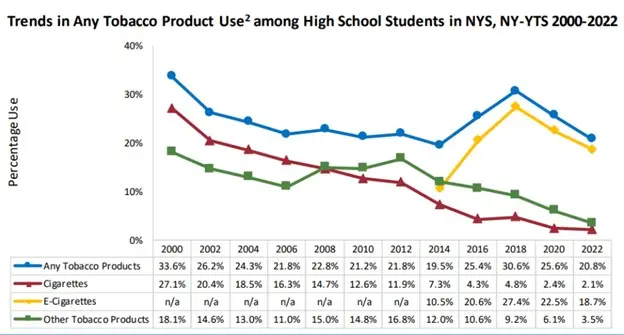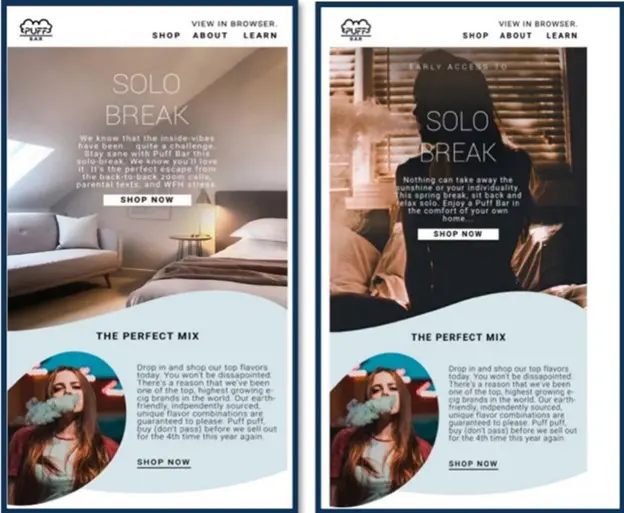 The state of New York appears to have plenty of evidence against the vaping-related companies it has targeted in its lawsuit. So why does it feel the need to also pad out its accusations with some questionable, or in some cases, seemingly even baseless accusations?
The state of New York appears to have plenty of evidence against the vaping-related companies it has targeted in its lawsuit. So why does it feel the need to also pad out its accusations with some questionable, or in some cases, seemingly even baseless accusations?
The US state has targeted multiple companies in a massive lawsuit on the illegal sale of non-tobacco-flavoured vaping products in its jurisdiction. It seemingly has confirmed violations of various applicable laws such as the federal Prevent All Cigarette Trafficking (PACT) Act, which regulates the shipment of tobacco products, including vaping products, through the US mail system, as well as state-level laws such as a ban on flavours and another on promotions for tobacco-related products (including vaping products).
For example, the state attorney general’s office has evidence of ads for discounts on vaping products posted to the various companies’ social media channels, can easily show they failed to comply with ingredient disclosure requirements by simply exhibiting the relevant packaging, and has evidence of misrepresentations on PACT Act documents – such as declaring packages to be under the 10 lb shipping limit when they were not or failing to require proof of age on delivery to home addresses.
Yet rather than just take the likely win, the attorney general’s office has also gone for some more disputed claims, including that vaping is reversing tobacco control gains of the past few decades and that e-cigarettes are equivalent to conventional cigarettes in the harm they cause.
Parts of the lawsuit seem unnecessary
The lawsuit states: “Defendants are illegally perpetuating a cycle of harm from the old tobacco industry’s playbook: hide the harm and use appealing colors and flavors to hook kids for life. As a result, the youth vaping epidemic is unwinding the decades of work combatting youth cigarette use, which successfully resulted in a dramatic reduction in youth smoking rates.”
But it then demonstrates that to not be the case. Later in the same document, data shows that conventional cigarette use continues to fall, regardless of vaping levels.

Prosecutors go on to accuse vaping of increasing overall tobacco use among youth. This is technically true, if electronic cigarettes are classified as a tobacco product. And in the US, by the letter of the law, vapes are considered a tobacco product, even though everything else about them apart from their nicotine origin would be classed separately.
Still, despite the correct if somewhat pedantic technicality, this part of the lawsuit comes across as a bit unnecessary. The companies are already going down. There’s no need for a further suspect hit on the way.
Similarly, the prosecutors say vapes are masquerading as products that are safer than conventional cigarettes: “The illegal products at issue are designed to dupe the public into believing that combustible cigarettes are a bad thing of the past, but modern, evolved e-cigarettes are safe and superior substitutes. This is contrary to the science behind these new nicotine products.”
Again, this is a bit disingenuous. No one is saying vaping is completely safe. But saying the science on their safety is inconclusive and they are probably as dangerous as combustibles is a bit like saying the science on global warming is inconclusive – there may be a few fringe scientists holding on, but it’s more politics than science governing contrary positions at this point.
Are flavours and design really aimed at youth?
There is also, of course, the flavours argument. Vaping companies will maintain that the sweet or fruity flavours they are producing are equally important to smokers and are therefore an essential part of any vape-based smoking-cessation plan. Rather than being a tool to attract youth, any attraction is purely coincidental.
That ship may have sailed. Some empathy could be had for creators of specific nostalgia flavours – such as facsimiles of candies that were popular in the 1980s or 1990s. But the general weight of opinion appears to have swung against these sweet flavours in places like New York, which has significantly contributed to an opposition to all non-tobacco flavours.
A similar case could be made for discreet hardware. The prosecutors appear to have a couple of slam-dunk allegations on youth appeal. For example, they say one company included references to escaping “parental texts” in one of its advertising campaigns.

That seems to be a pretty cut-and-dried allegation for the state to prove. So then why bring in other, more questionable ones? For example, another advertisement picked out by the prosecution highlighted that a disposable product was “extremely small and discreet”, adding that the consumer “can easily go out and use [the] disposable without attracting attention or having to carry something bulky around in your pocket”.
And while a case could be made that such a feature would appeal to youth, it could much more easily be a major factor for adults looking to stop smoking. Ask anyone going out with a clutch bag about how appealing they would find a small and discreet device they could drop in it.
Turning the e-cigarette industry against itself
It appears pro-vaping arguments are now also being used as a stick to beat the industry. There was always an element of this. In fact, in the New York lawsuit, the attorney general’s office says claims that vaping is safer or healthier than cigarettes are misleading or deceptive advertising for e-cigarettes – despite these being completely true. But this is old hat. The industry has long been frustrated by the inability to definitively capitalise on vaping’s greatest strength over conventional cigarettes.
What is new is detractors taking pro-vaping arguments and using them to further wallop the industry. In one case, the New York attorney general’s office points to statements from a vaping company alleging “state governments were motivated to crush vaping out of a selfish bid to bolster combustible tobacco revenues” and that “‘big pharma’ was engaged in a lobbying campaign to present false information about vaping in order to protect their interests in smoking cessation remedies” as evidence the company was attempting to “mislead consumers about the dangers of vaping”.
These sorts of theories were meant to brush away concerns over the safety and legality of e-cigarettes, the prosecutors say. And while there are critics of such theories in pro-vaping circles, with many believing indulging in conspiracy theories makes it harder to fight legitimate battles when the message is muddled by tin-foil hats, they remain a popular enough talking point. Their endurance and popularity alone mark them as more than attempts to mislead or detract from safety concerns. They represent legitimate grievances, and it’s frustrating to see them being turned against the industry.
In some ways it is strange to see prosecutors go out on these unnecessary tangents when there is strength in the core of their case. In all likelihood they want as many charges against as many of the defendants as possible – similar to examples of charge stacking in criminal cases, though here with the general expectation a settlement is more likely than having to argue any of the points in a courtroom. Now we wait and see whether such a settlement is reached and what exactly that in turn accomplishes.
– Freddie Dawson ECigIntelligence staff
Image: AI-generated







